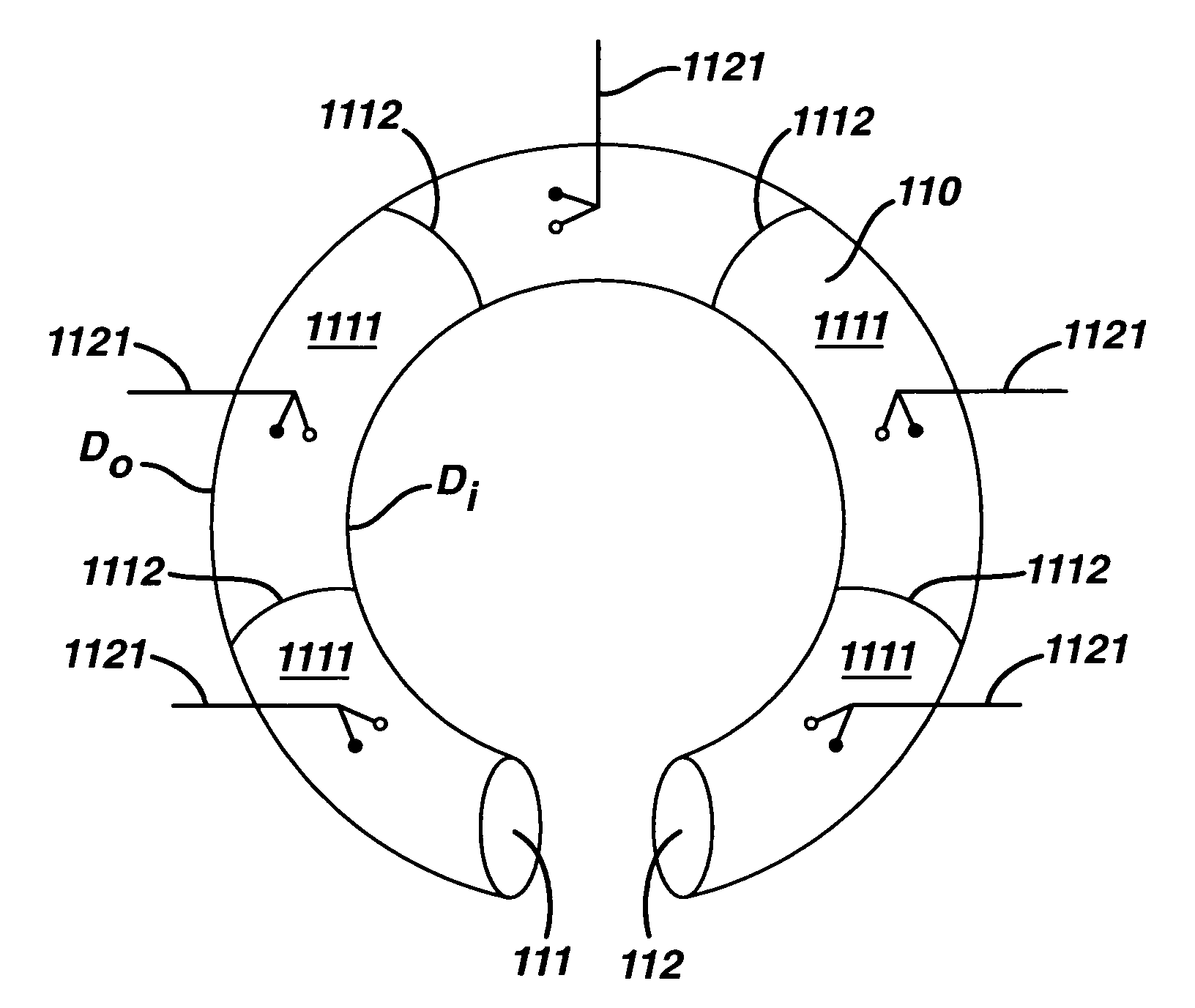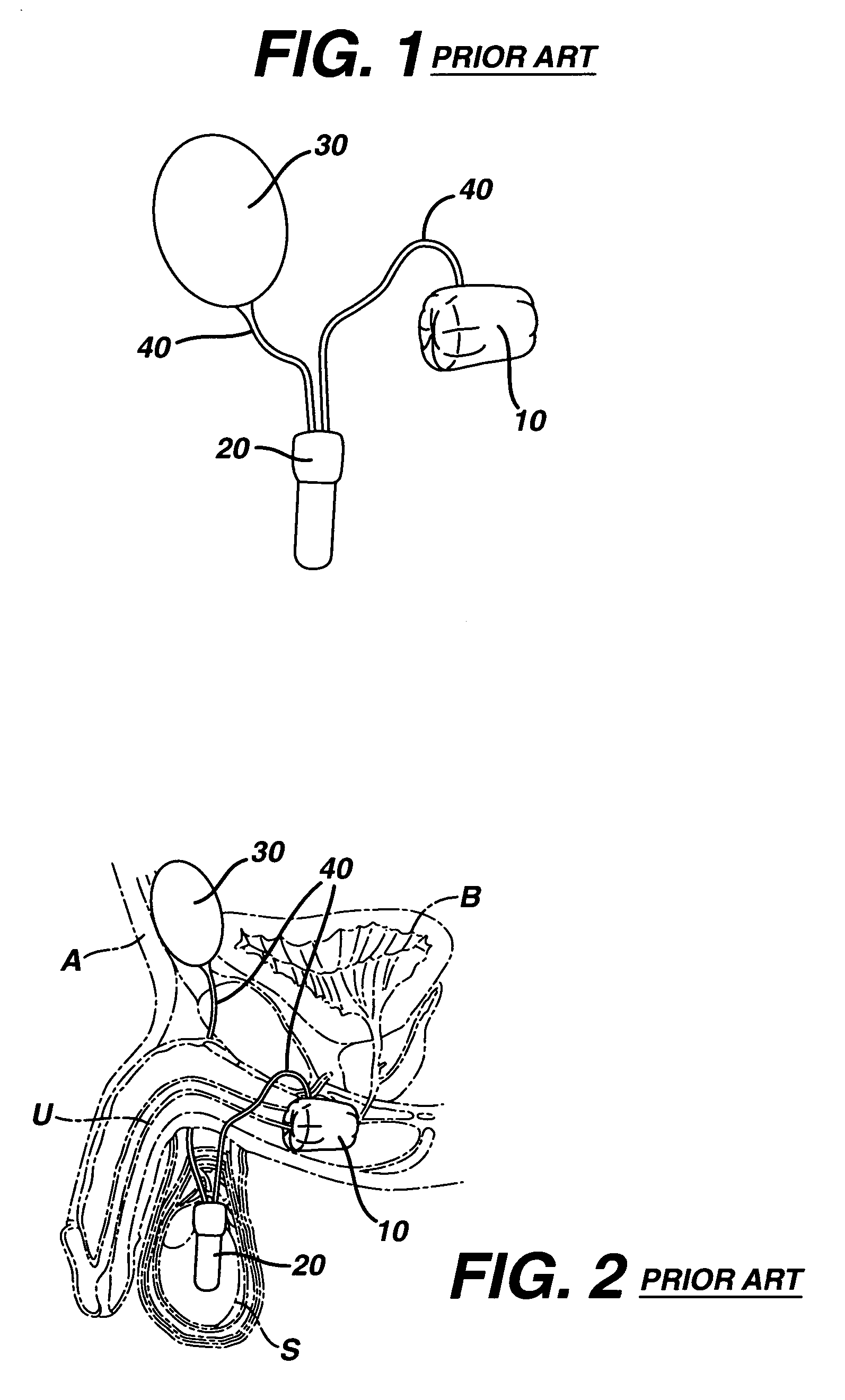Artificial sphincter with variable viscosity fluid-filled collar
a technology of fluid-filled collar and artificial sphincter, which is applied in the field of artificial supplementing the function of the sphincter muscle, can solve the problems of restricting the flow of bodily fluids, and achieve the effect of variable viscosity
- Summary
- Abstract
- Description
- Claims
- Application Information
AI Technical Summary
Benefits of technology
Problems solved by technology
Method used
Image
Examples
Embodiment Construction
[0030]FIG. 3 illustrates various components of one embodiment of an artificial sphincter system according to the invention. As shown in FIG. 3, the artificial sphincter system is comprised of a collar 110 containing a variable viscosity fluid, an implantable control unit 120 connected to the collar, and a sensor 130 connected to the implantable control unit 120. The collar 110 surrounds an anatomical conduit, such as an urethra U (FIG. 4). The state of the variable viscosity fluid within the collar 110 determines the rigidity or pliability of the collar 110 and thus the expandibility of the anatomical conduit. FIG. 5 illustrates an external control unit 140 usable in combination with the various artificial sphincter systems and methods described herein.
[0031]Referring again to FIG. 3, the collar 110 is comprised generally of flexible, bio-compatible material as known in the art. Preferably, the collar 110 is biased in a circular, or semi-circular, configuration such that when placed...
PUM
 Login to View More
Login to View More Abstract
Description
Claims
Application Information
 Login to View More
Login to View More - R&D
- Intellectual Property
- Life Sciences
- Materials
- Tech Scout
- Unparalleled Data Quality
- Higher Quality Content
- 60% Fewer Hallucinations
Browse by: Latest US Patents, China's latest patents, Technical Efficacy Thesaurus, Application Domain, Technology Topic, Popular Technical Reports.
© 2025 PatSnap. All rights reserved.Legal|Privacy policy|Modern Slavery Act Transparency Statement|Sitemap|About US| Contact US: help@patsnap.com



